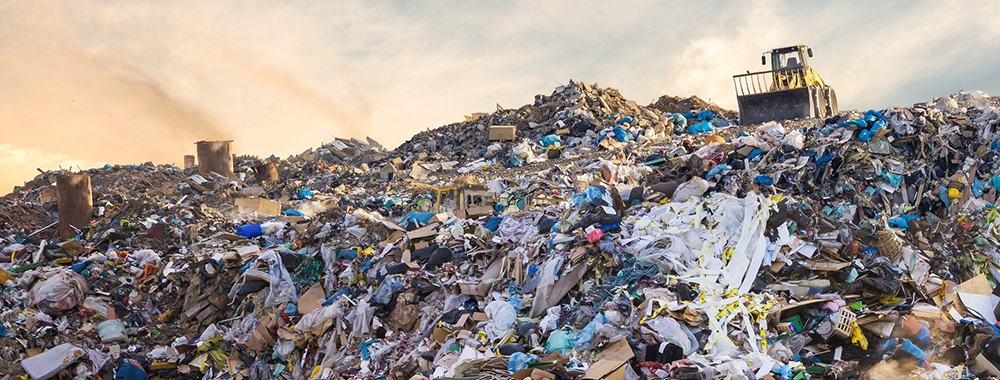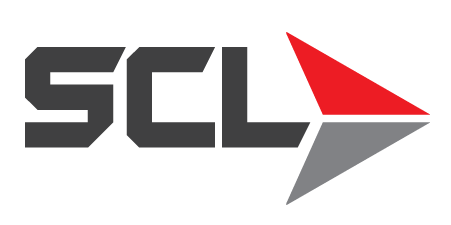Large Quantity Generator – Understanding Waste Classifications

Large Quantity Generator
Understanding Waste Classification and Waste Management Parameters
Not all industrial and commercial waste is categorized in the same way, and different types of waste must be tracked, stored and disposed of according to various federal and state-specific regulations. Living in California, businesses face additional regulations that must be adhered to in order to remain in compliance with proper waste production levels and disposal, and businesses fall into different classifications depending on how much waste they generate. In this article we spoke with SCL Richmond Division Manager Brett Leggitt about waste generation classification and avoiding being a large quantity generator. We also spoke with KVAC Environmental Services, Inc. Health and Safety Manager and chemist Jeanne Delperdang about the categorization of different types of waste.
Not All Waste is Created Equal – Understanding Waste Categorization
RCRA Waste – For our customers at SCL, understanding the difference between RCRA and Non-RCRA materials is essential, as well as knowing whether or not they are a large quantity generator. RCRA stands for the Resource Conservation and Recovery Act – the public law mandated by Congress that established the parameters of proper hazardous and non-hazardous solid waste management, including the production of waste, waste storage and waste removal and disposal. The RCRA program was developed to protect communities and the conservation of natural resources by developing clear guidelines and through legal enforcement. It is carried out by the Environmental Protection Agency (EPA), which establishes and enforces various regulations and policies to ensure the safe management of materials that are considered to be solid and/or hazardous waste. With the federally mandated RCRA program, a strong emphasis is placed on waste reduction, pollution prevention and beneficial reuse and recycling. Under RCRA there are two categories of waste:
RCRA Subtitle D – Non-Hazardous Waste: Bans open dumping of waste according to the RCRA guidelines “And sets minimum federal criteria for the operation of municipal waste and industrial waste landfills, including design criteria, location restrictions, financial assurance, corrective action (cleanup), and closure requirement. States play a lead role in implementing these regulations and may set more stringent requirements. In (the) absence of an approved state program, the federal requirements must be met by waste facilities.”
RCRA Subtitle C – Hazardous Waste: Using a “cradle-to-grave” approach when it comes to hazardous waste disposal, the EPA manages this variety of waste from the moment it is initially generated, through its storage and transport and to its final disposal, tracking it every step of the way to ensure public safety and to avoid natural resource contamination. As stated in the RCRA guidelines, “Under Subtitle C, (the) EPA may authorize states to implement key provisions of hazardous waste requirements in lieu of the federal government. If a state program does not exist, EPA directly implements the hazardous waste requirements in that state. Subtitle C regulations set criteria for hazardous waste generators, transporters, and treatment, storage and disposal facilities. This includes permitting requirements, enforcement and corrective action or cleanup.”
Non-RCRA Waste – According to KVAC Environmental Services, Inc. Health and Safety Manager and chemist Jeanne Delperdang, “RCRA defines the federal regulations that dictate what is hazardous and what is non-hazardous, creating a minimum benchmark. California always goes above and beyond the minimum, so Non-RCRA includes anything that is not regulated as a hazardous waste under federal regulations, but is deemed to be hazardous under the state of California’s own specific guidelines. RCRA represents the federal bible as to what is considered to be hazardous, but in California you have to determine whether or not products are RCRA or Non-RCRA, which is difficult to interpret. In the state of California, we follow the CalEPA, the California Department of Toxic Substances Control (DTSC) and Title 22.” Title 22, Division 4.5 represents the environmental health standards established by the DTSC for the proper management of hazardous waste within the state of California. Substances and items that are considered to be Non-RCRA within the California, yet do not fall under the federal RCRA classifications include:
- Waste Oil
- Waste Antifreeze
- Used Oil Filters
- Oily Solids and Debris (such as oil soaked rags, gloves, and floor dry)
According to Brett Leggitt, SCL Division Manager, “Being Non-RCRA, none of these items can be thrown into the trash. They have specific storage and disposal requirements. These substances defined by the state of California as hazardous waste are regulated every step of the way. The entire lifespan of a substance, the who, what, when, where and why needs to be accounted for. A few things that should be considered are the use of proper storage containers for the waste being disposed of, proper labeling of those containers, and proper manifesting. Any waste liquids also require clean and dry secondary containment. Secondary containment vessels need to be able to hold the required volume of the largest container, plus an additional overflow volume from other sources the waste may be exposed to such as a fire sprinkler system. You have to be able to prove that your containment system is sufficient and will not overflow. There’s a lot to it.” Additionally, waste generators with on-site waste storage tanks must have the waste tank inspected by a qualified, certified engineer who is registered with the state of California every 5 years to insure the storage tanks are in compliance. This inspection includes not only assessing the structural health of the tank itself, but also takes into account other considerations such as earth quake anchoring and precautions to prevent the storage tank from being struck by a vehicle.
Universal Waste – The term “universal waste” refers to hazardous waste materials that are widely used and produced in households and organizations that require special disposal practices. Examples of universal waste include electronic devices, batteries, computers, televisions, any equipment that contains mercury such as thermostats and thermometers, and fluorescent light bulbs and lamps. Explore waste items that are banned from regular trash disposal in the state of California by visiting Cal Recycle.
Large Quantity Generator – High Volume Waste Production
Says Leggitt, “If a company is labeled as a large quantity generator, things become significantly more complicated. Large quantity generators (LQGs) produce 5 tons of hazardous waste per year, 1,000 kilograms per month or 1 kilogram or more of extremely hazardous waste per month, known as acutely hazardous substances. If labeled a large quantity generator, reports need to be filled out on a regular basis to account for waste management processes, a plan needs to implemented to reduce the waste volume and in many cases a designated staff person is assigned to specifically monitor the company’s waste management. If labeled a large quantity generator, your waste holding capability is impacted and you are not able to hold waste longer than 90 days, which can further complicate logistics and operations. In general, a company does not want to get slapped with the large quantity generator label.”
The High Price of Waste Misclassification
According to the California Department of Toxic Substances and Control, “For (waste) generators, misclassifying a hazardous (substance) as non-hazardous can have serious legal repercussions. When a hazardous waste is managed as a non-hazardous waste, it has been illegally managed or disposed of and regulators can impose hefty fines… as high as $25,000 a day for as long as the hazardous waste is managed as non-hazardous.”
Mandatory RCRA Training
Says Jeanne Delperdang, “In the past, if we picked up hazardous, Non-RCRA waste, it had to be on a hazardous manifest (a shipping document) that could be signed by anyone. Today, whoever prepares or handles a manifest or signs for the pickup or delivery of a hazardous material must have undergone an annual RCRA training or they are looking at accruing fines. As the Compliance and Health and Safety Manager at KVAC I offer a lot of trainings. As a degreed chemist, I am also able to assist with the interpretation and analysis of results. At KVAC we cover hazardous and non-hazardous, RCRA and Non-RCRA materials. We do everything except handle radioactive materials and explosives. My specific background is in hazardous waste and emergency response. If there is oil that has spilled onto soil, depending on the concentration it can be labeled as RCRA or non-hazardous, but within the state of California, I’m going with Non-RCRA and calling it good. Under federal standards I may be over-classifying, but California operates under more stringent parameters.”
Upcoming Course: KVAC Environmental Services RCRA/Hazmat Combined Training
- Instructor: Health and Safety Manager Jeanne Delperdang
- When: Saturday, November 18th
- Time: 8am to 2pm
- Where: University of Phoenix – Ontario
- Address: 3110 East Guasti Road Ontario, CA 91761
- Details: Limited space is available, so email Jeanne to reserve a spot at Jeanne.delperdang@kvacenv.com
Says Delperdang, “These trainings are becoming more important because I suspect that proof of having gone through them will be increasingly checked and fined in the near future. A shipping manifest indicates what is in or on a truck and anything with waste needs to be signed for by a transporter, whether it be RCRA or Non-RCRA. Anyone signing for these products at the front of the line needs RCRA training. If you want to dispose of something because it’s off spec or contaminated, you need to sign a manifest, and if that off spec products turns out to be some methyl-ethyl bad stuff, you absolutely need to have proof that you have gone through this training. When a product such as 6 drums of waste oil gets to a disposal site it is signed for that they received 6 drums of oil. If only 5 get delivered, the state wants to know where that last drum went. As the transporter, when we pick it up, we sign for it and leave you a copy, at which point you make a copy for yourself and mail one to the state. The disposal location makes a copy and sends one to the state as well, creating a system of accountability that ensures those drums aren’t lying out in the desert somewhere. If the manifest copies don’t match, you’re getting a letter from the state of California inquiring as to the whereabouts of those drums full of waste.” This paper heavy system is in the process of moving to an electronic platform, known as E-Manifests, with the entire process eventually being done electronically. E-Manifests came online in 2017, but the full transition from paper to digital will take time.
The Bottom Line
Know your status as a waste generator. Are you a small or large quantity generator? Understand the classifications of waste and what types of waste your facility is producing, whether it falls under the category of RCRA or Non-RCRA. Consider taking a RCRA training to remain compliant with the handling of waste product manifests be sure to hire reputable environmental organization for support. Says Jeanne Delperdang, “Make sure that whoever you hire is reputable so that you can know where your waste is going. We are the most regulated state, so things are constantly being added and changed.” Stay ahead of the curve to understand the full landscape of waste management and to minimize becoming a large quantity generator within the state of California to avoid costly fines for being out of compliance.
Contact an SCL Consultant Today
In a wide range of industrial sectors, SCL is committed to being the number one logistics and solutions provider for the products that protect and optimize the machines that keep our country moving. We pride ourselves on remaining at the forefront of industry trends and technological innovations, and as the market continues to evolve, we are committed to providing extensive product and industry knowledge and total performance satisfaction for our customers. For information on how we can assist your fleet in choosing the optimal products at a competitive price, contact an SCL consultant today.
